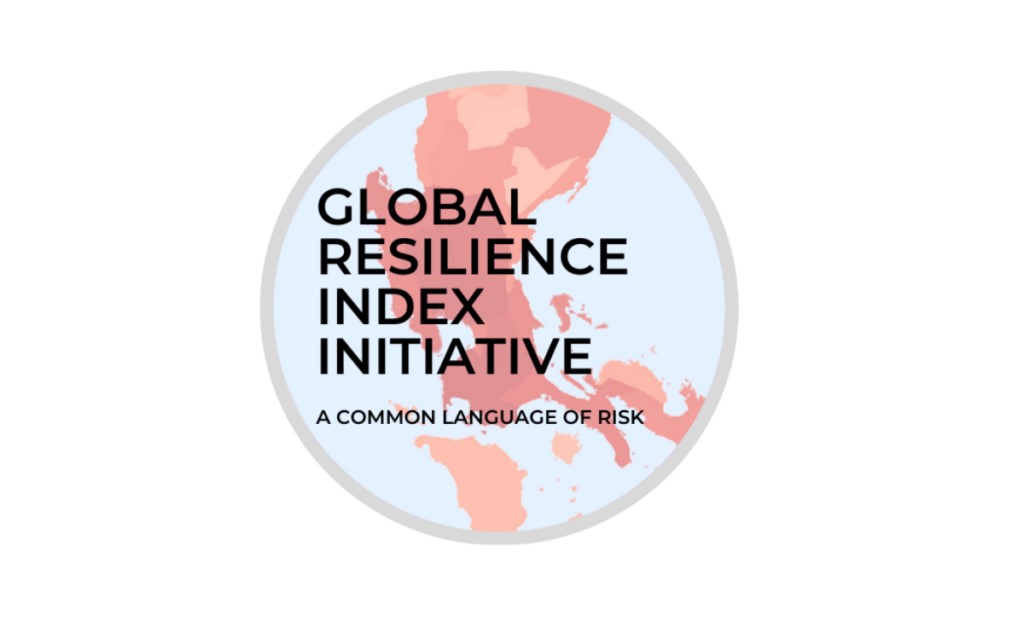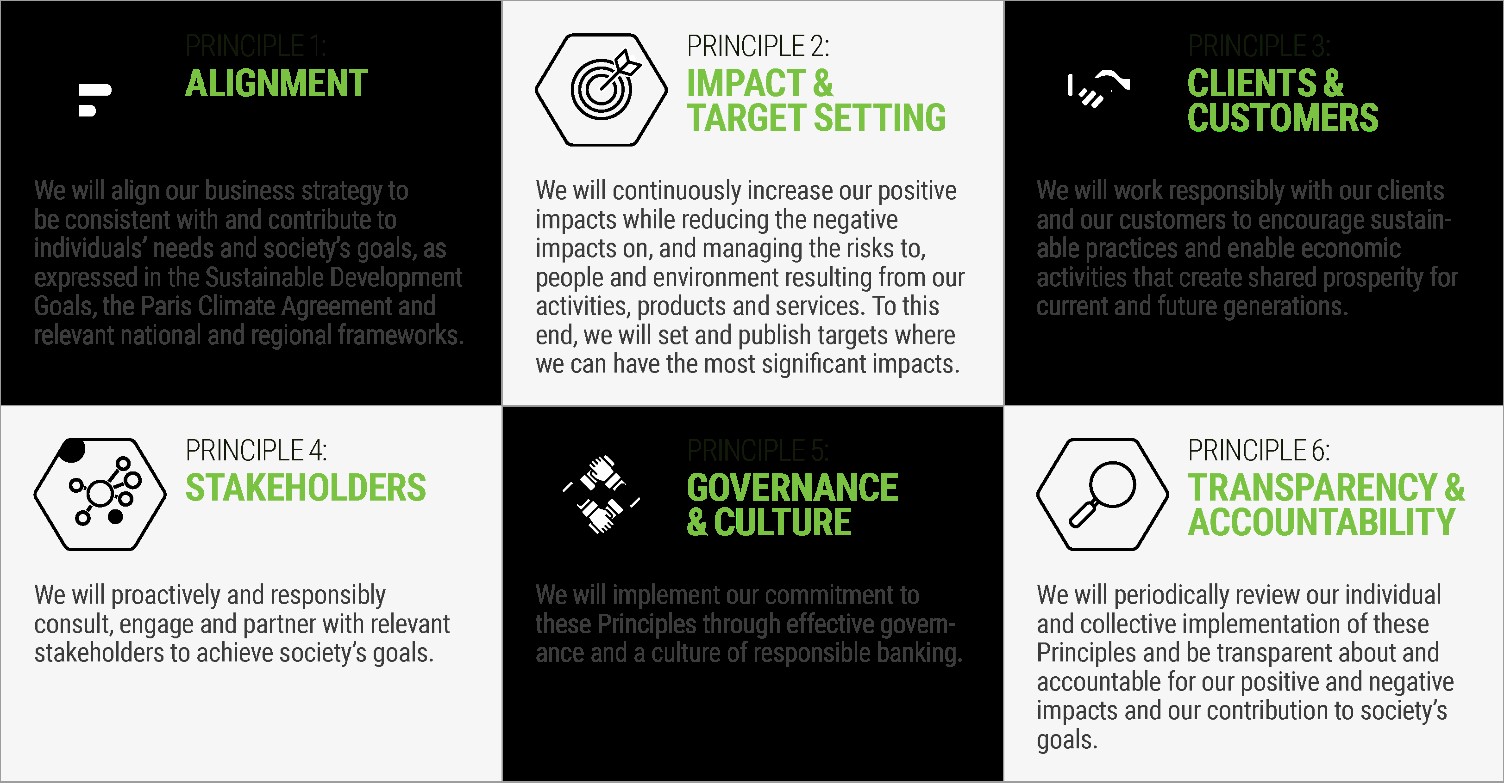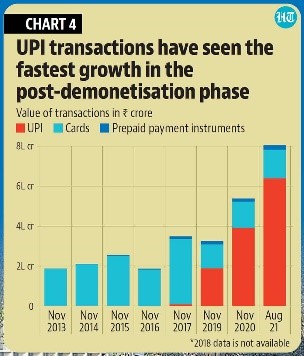Friday, 12th November 2021
Reserve Bank-Integrated Ombudsman Scheme
In News
Reserve Bank-Integrated Ombudsman Scheme has been launched.
About the News
- About the Scheme: The Reserve Bank-Integrated Ombudsman Scheme aims to further improve the grievance redressal mechanism for resolving customer complaints against entities such as banks, NBFCs and payment service operators regulated by the RBI.
- Centralised Receipt and Processing Centre (CRPC): To offer ease of operation to handle the customer complaint a CRPC has been set up for centralized handling of all complaint receipts and initial processing and moving towards a ‘One Nation – One Jurisdiction’ approach.
- Ombudsman: It is an appellate body where customers can escalate complaints if the financial institution fails to address the complaint within 30 days.
- Customers can approach the ombudsman even when they not satisfied with the resolution offered or explanation given by the financial institution.
How will the Scheme work?
- Central Theme: To make the alternate dispute redressal mechanism simpler and more responsive to the customers of regulated entities, three dedicated ombudsman schemes:
- BOS (Banking Ombudsman Scheme as amended upto July 1, 2017),
- OSNBFC (Ombudsman Scheme for Non-Banking Financial Companies 2018 and
- OSDT (Ombudsman Scheme for Digital Transactions (OSDT) 2019 that were in operation till lately have now been integrated around the central theme ‘One Nation-One Ombudsman’.
- Single Point of Reference: It will have one portal, one email and one address for the customers to lodge their complaints and there will be a single point of reference for customers to file their complaints, submit the documents, track status and provide feedback.
- Multi-Lingual Toll Free Number: A multi-lingual toll-free number will provide all relevant information on grievance redress and assistance for filing complaints.
- Broad-based grounds for complaints: Broadening the grounds of complaints and incorporating only a detailed ‘negative’ or ‘exclusions’ list for rejection of a complaint will be incorporated under the scheme.
- Reduction in the Turnaround Time (TAT): A reduction in the turnaround time (TAT) for complaint resolution to 30 days in a phased manner over a period of two years will be implemented.
Source:
Donations received by Regional Political Parties
In News
Recently, Association for Democratic Reforms (ADR) released Analysis of Donations Received by Regional Political Parties Report for FY 2019-20.
Findings of the Report
- National parties received 71% of their income from “unknown” sources.
- Parties in the south (TRS, TDP, YSR Congress Party, DMK and JD(S)) topped the list of regional parties with highest incomes from “unknown” sources.

Regulation of funding to political parties in India
- The Law: Donations to political parties in India are regulated by Representation of People Act (RPA) 1951, Companies Act 2013 and the Foreign Contribution Regulation Act (FCRA) 2010.
- Limitations: There are no limits on individual and corporate donations. However, political parties cannot receive donations above Rs 2,000 in cash from one person.
- Electoral Trusts: It was introduced in 1996 and is regulated by the Electoral Trusts Scheme, 2013. 95% of contributions received by an electoral trust, in any financial year, shall be distributed to political parties.
- Electoral Bonds Scheme: Anyone, including corporates can donate to parties anonymously through these bonds by purchasing them from designated State Bank of India branches.
- Foreign Contribution: There is ban on foreign contribution to candidate or political party. However, after the 2010 amendment to FCRA, a candidate/party will be able to accept donations from foreign companies registered in India.
- Partial state funding: In-kind subsidy in form of free airtime on state owned electronic media is permissible based on party’s performance, free supply of copies of electoral rolls and identity slips of electors.
- Disclosure of funds: Section 29C of RPA, 1951 requires financial reporting of all contributions above Rs 20,000 received by a party to the ECI in each financial year.

-
- Parties also need to submit annual audited accounts to the ECI by 31st October each year.
- Electoral Trusts are required to file annual report of contributions with details of the name and addresses of donors before due date of filing income tax returns.
- There is no requirement for corporates to declare political donations in their profit and loss account after amendment brought to Companies Act 2013 in 2017.
Sources:
The Global Coal Pledge
In News
While more than 40 countries have committed to shift away from coal, in pledges at the COP26 , India along with some of the largest coal dependent economies like China, USA and Brazil have refused to sign the pledge.
About the News
- The Pledge: This accord, titled ‘Global Coal to Clean Power Transition Statement’, was signed by about 40 coal-dependent countries.
- It binds them to completely stall investment in new coal power generation plants at domestic and international levels.
- Under this pledge, multiple countries have pledged to shift away from the use of coal—one of the most carbon-intensive sources of energy and the biggest contributors to climate change.
- Signing Countries: The agreement is supported by Canada, Denmark, Poland, Vietnam, Chile and Germany, to name a few.
- The pact has also been signed for the first time by five of the world’s top 20 power-generating countries, namely, Poland, Indonesia, South Korea, Vietnam and Ukraine.
- Non-Signing Countries: The pledge has been facing criticism as some of the biggest coal-dependent countries, namely, Australia, India, China, and the US, have not signed it.
- Combined, China and India account for roughly two-thirds of the world’s coal use, while Australia is noted to be the 11th-biggest user and the largest producer of coal in the globe.
- Timeline of the Pledge: Several major economies have agreed to phase out coal power by the 2030s, while the timeline for developing nations has been extended until the 2040s.
- Financial Support: At the Glasgow summit, roughly $20 billion (~Rs 1.5 lakh crores) have been pledged to help developing countries transition away from coal.
Why India did not sign it?
- Finance Issues: The developing countries need financial support from the developed world for a fast and fair transition away from coal. But the current global commitments fall well short of the requirement.
- Coal Dependency: Being an inexpensive energy source, coal fuels more than half of India’s electricity requirement.
- Historical Responsibility: Climate negotiation group of 22 countries including India and China - known as Like-Minded Developing Countries (LMDC) have called attempt to force coal reduction targets as transferring historical responsibility to the developing countries.
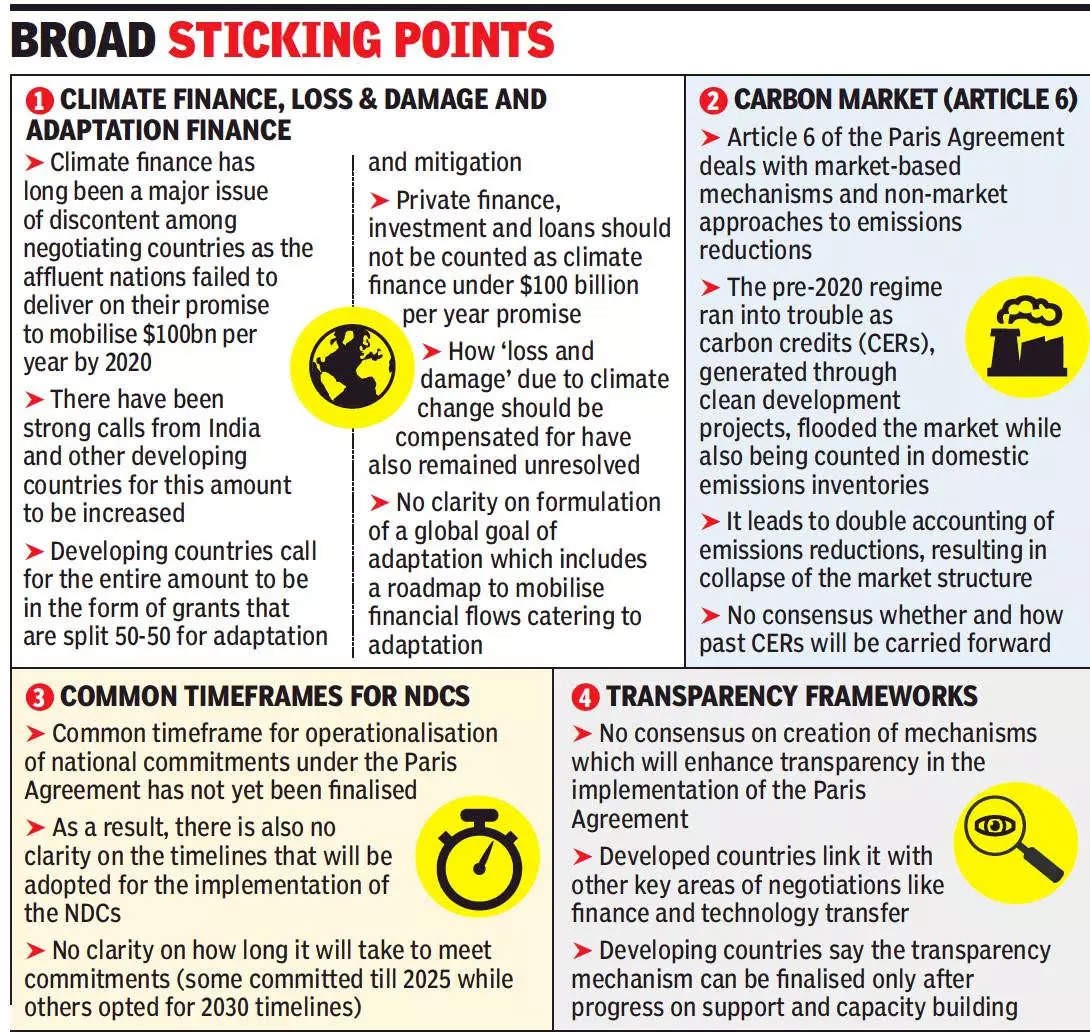
Sources:
Reforming Public Procurement
In News
The Finance Ministry recently released revised guidelines on public procurement and project management which outline innovative rules for faster, efficient and transparent execution of projects.
The Nature of Public Procurement
- Public procurement involves purchasing of goods or services by different government entities such as ministries and departments of the government for public service delivery, and it encompasses activities ranging from assessment of procurement needs to awards of contract and final payment.
- Public procurement is a key economic activity of governments, accounting for 20 - 22% of GDP in India, against the US’s 9% and the OECD average of 12%.
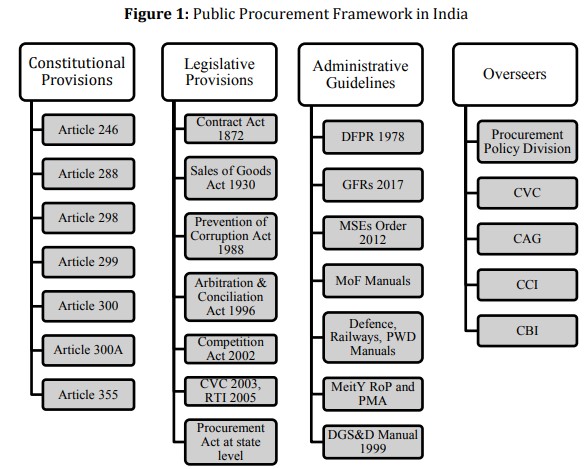
Public Procurement in India: A Complex Process
- Absence of a comprehensive public procurement law: In the absence of a comprehensive law, General Financial Rules (GFRs) allow the government entities to conduct procurement activities independently.
- Many entities such as Defence, Railway, Telecom, and Directorate General of Supplies and Disposal (DGS&D) separately issue procurement manuals to administer public procurement activities.
- Socio-economic developmental objectives: The Public Procurement is aimed at achieving socio-economic developmental objectives including promotion of Micro & Small Enterprises (MSEs) through price and purchase preferences and reservation of sector-specific products. These lead to complexities due to multiple interpretations of rules and regulations at the discretion of the procuring entities.
Issues in the Public Procurement in India
- The absence of a comprehensive procurement Act has resulted in heterogeneous procedures and multiplicity of rules across the procuring entities. Although GFRs and other procurement manuals are exhaustive, they are prone to unfair practices in the absence of legislative backing.
- Lack of standard bid documents despite code of contract following the international agencies such as IMF and the World Bank. This goes against the principles of standardization, transparency, and accountability.
- Delays in activities in procurement cycle: Despite introduction of e-procurement, the procurement process is often delayed in the stage of need assessment, budget preparation, and approval.
- Unfair practices and corruption: Given the size and the interests of the stakeholders, public procurement is vulnerable to unfair practices imposing high costs on both the government and the society.
- Failure of the Integrity Pact: GFR 2017 prescribes adoption of Integrity Pact towards curbing corruption and unfair practices. It is an instrument that commits the buyer and the potential bidders to total transparency. Its implementation is assured by Independent External Monitors (IEMs) who are considered to be persons of unimpeachable integrity.
- Presence of anti-competitive elements and practices by the bidders’ community such as collusive bidding, bid rigging, cartelization, and abuse of dominance tends to hamper the procurement process by negating the best value of money.
- Competency and skill of the procurement officials needs to be enhanced in regard to the procurement management, rules and regulations, legal issues, contract management issues, and others. Technological competency and capabilities should also be enhanced for proper implementation of e-procurement.
Why Reform Public Procurement?
- Public procurement for governance and social accountability:
- Three pillars of effective and successful governance are increasing value for money, improving public service delivery, and creating an enabling environment for private sector–led growth. Public procurement, with links to all three pillars, is thus an essential element of governance reforms.
- Social accountability is an approach to governance that promotes inclusive and accountable government through civil society organizations (CSOs) and citizen participation. Public procurement is an essential governance arena, and the way it is executed reflects the level of social accountability.
- Public procurement for service delivery: A well-functioning and efficient public procurement system addresses issues like inefficiency, corruption, and waste, and thus, it helps the development process by improving the public administration.
- Public procurement for private sector development and trade: Transparent and accountable public procurement systems can catalyze private sector development by opening access to business opportunities, improving the business and investment environment, enhancing competition, and promoting economic growth.
- For instance, promotion of MSEs is important due to their growth potential through innovations, competition, and inherent employment opportunities.
- Capacity development: Develop public procurement as a profession, facilitating information and know-how transfer, joining efforts with relevant actors to position procurement strategically at a national level, and providing high-quality specialized training.
Steps and Reforms Taken
- The Procurement Policy Division (PPD) under the Department of Expenditure has the mandate to undertake reforms in the procurement process. The PPD attempts to disseminate the best practices, provides guidance and capacity building, and issues the procurement manuals.
- Electronic Portals for Public Procurement in India: GFR 2017 has mandated the use of Central Public Procurement Portal (CPPP) and GeM by the procuring entities.
- The Government e-Marketplace (GeM) system has resulted in a 10% savings in public procurement costs in five years. 56% of the order value processed through the portal has been delivered by MSMEs, with seven lakh small firms on board.
- Public Procurement Policy for Micro and Small Enterprises (MSEs) Order, 2018 mandates that every Central Ministry /Department / PSUs shall set an annual target for 25% procurement from MSE Sector.
- SAMADHAN portal and TReDS portal to resolve the payment related issues of MSMEs.
- Government has amended the Public Procurement (Preference to Make in India) Order, 2017 in 2020 to expand the scope for local content requirement in public procurement tenders, in a move that aims to promote self-reliance.
- Government released guidelines for reforms in Public Procurement and Project Management in October 2021. These guidelines attempt to incorporate into the realm of Public Procurement in India, innovative rules for faster, efficient and transparent execution of projects and to empower executing agencies to take quicker and more efficient decision in public interest.
- Some of the improvements include prescribing strict timelines for payments when due. This is expected to improve liquidity with the contractors especially MSMEs.
- As part of Government’s Digital thrust, Electronic Measurement Books have been prescribed as a means of recording progress of works.
- Alternative methods for selection of contractors have been permitted, which can improve speed and efficiency in execution of projects.
- In appropriate cases, quality parameters can be given weightage during evaluation of the proposal in a transparent and fair manner, through a Quality cum Cost Based Selection (QCBS), as an alternative to traditional L1 system.
- A few States such as Tamil Nadu, Karnataka, Rajasthan, Andhra Pradesh, and Assam follow their own procurement Acts to carry out public procurement at the State level.
Conclusion
The recent reform initiatives reveal India’s efforts to move towards a transparent, accountable, and competitive public procurement regime. The Work Bank (2017) report also reveals that the public procurement framework in India has made remarkable progress towards a transparent regime in the recent years. However, the system is yet to come up with the best standards to become comparable to countries like Australia and Singapore. The government needs to put more efforts towards improving transparency, accountability, competitiveness, and efficiency of the procurement system. Reviving the Draft Public Procurement Bill 2012 is the first step in this direction.
Question: Social Accountability of the government can be achieved through Public Procurement. Discuss
Sources:
- Finance Secretary Dr T.V. Somanathan releases guidelines for reforms in Public Procurement and Project Management
- General Instructions on Procurement and Project Management
- FinMin reforms public procurement to fast-track projects, help MSMEs
- Public Procurement in India: Assessment of Institutional Mechanism, Challenges, and Reforms
- Public Procurement Reforms to enhance value for money
- Why Reform Public Procurement?
- PUBLIC PROCUREMENT AND COMPETITION LAW
- Centre saved 10% in cost via GeM purchase
- Using Coronavirus crisis to affect permanent reforms in public procurement system
- FM Reviews Capital Expenditure & Payments of Maharatnas and Navratnas CPSEs
- Get public procurement policy right
- India allows higher local content requirement for public procurement
This Day in History - Salim Ali
On November 12, 1896, renowned ornithologist and naturalist Salim Ali was born. He was the first Indian to conduct systematic bird surveys across the country. He was a key figure in Bombay Natural History Society and was helped create the Bharatpur Bird Sanctuary and the Ranganathittu Bird Sanctuary. In 1941, he published The Book of Indian Birds, which popularised ornithology among the common man. Besides the Padma Bhushan (1958) and the Padma Vibhushan (1976) awards, Ali received the Gold Medal of the British Ornithologists’ Union in 1967. He was the first non-British citizen to receive the honour. On his 100th birth anniversary India’s postal department released two postal stamps to honour him. Several species of birds, bird sanctuaries and institutions have been named after him.

Source:
Image of the Day - Rising sea levels
This is image of Tuvalu's Minister for Justice, Communication & Foreign Affairs giving a COP26 statement while standing in the ocean in Funafuti, Tuvalu. By standing knee-deep in seawater, Kofe wanted to highlight how his low-lying Pacific island nation has been negatively impacted by climate change and face the threat of disappearing completely if sea levels continue to rise. The island nation of Tuvalu, which is home to around 11,000 people, has witnessed sea levels rise by about 0.5 centimetres every year since 1993, according to a 2011 Australian government report. In case the situation worsens and the country is completely submerged due to climate change, Tuvalu is exploring legal ways to keep its ownership of its maritime zones and recognition as a state.

Source:
Airshed
- Context: Air pollution in the Indo-Gangetic airshed has been increasing.
- An airshed is defined as a geographic area that, because of topography, meteorology and/or climate, is frequently affected by the same air mass.
- It is the entire area over which the pollutants disperse due to meteorological and geographical factors.
- The region of the Indo-Gangetic plain, for example, may be considered as one airshed.
- It extends from Rawalpindi in Pakistan to Rangpur in northern Bangladesh and passes through some of the most populous states of India that include Punjab, Delhi, Haryana, Uttar Pradesh, Bihar and West Bengal.
- This airshed records the highest levels of PM2.5 in the country because the Himalayas to the north prevent these particles from moving out of the plains.
- During winters, when the surface air temperature is lower than the air temperature above, the air stops mixing and becomes stagnant, bringing the entire region from Punjab to West Bengal under a thick layer of stagnant pollution.
- Further, the loose alluvial topsoil in the Indo-Gangetic plains is prone to getting displaced by winds and vehicles, increasing the level of PM10 in the air across the region.
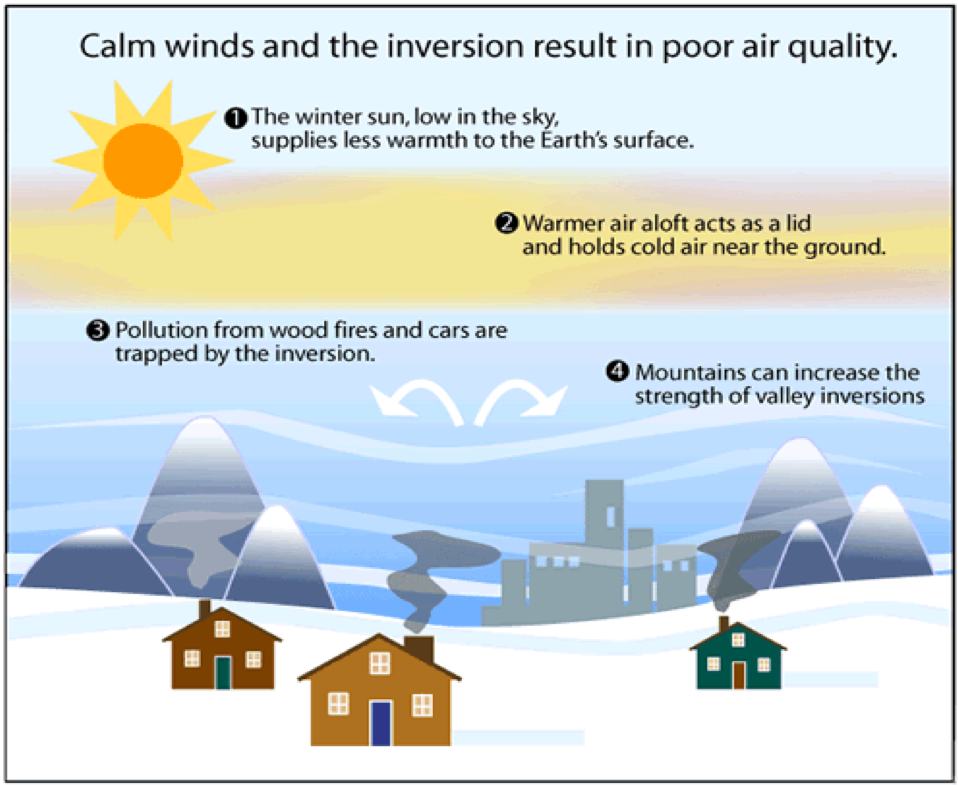
Source:
- India’s Rs 12,000-crore fund to fight air pollution is going up in smoke
- Airshed management as an answer to Delhi’s air woes
Image Source:
Peak power deficit
- Context: The Union Power Ministry has claimed that the peak power demand deficit in the country has almost been “wiped out” through government interventions.
- Peak power deficit is the difference between peak power in the country in a particular year and the demand that was met.
- The deficit stood at 4% in 2020-21, compared to 16.6% in 2007-08 and 10.6% in 2011-12.
- This decrease in the deficit is due to the multi-pronged, comprehensive and aggressive interventions of the government such as:
- Deen Dayal Upadhyaya Gram Jyoti Yojana (DDUGJY): launched in 2015 for infrastructure push in the rural sector.
- Integrated Power Development Scheme (IPDS): introduced in 2014 to address power infrastructure gaps in urban areas.
- Pradhan Mantri Sahaj Bijli Har Ghar Yojana (Saubhagya) scheme: launched in 2017 to take electricity to every household (so far It has been able to supply electricity connections to 2.8 crore households).
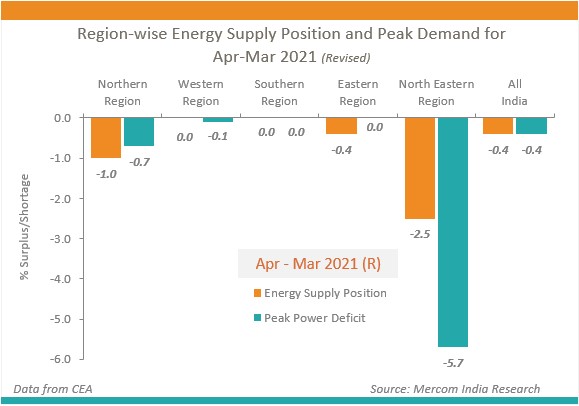
Source:
- Power ministry says peak power demand deficit is almost 'wiped out'
- Peak power deficit in India almost wiped out, says power ministry
Image Source:
Like Minded Developing Countries (LMDCs)
- Context: LMDCs have put forward a figure of $1.3 trillion on the enhanced flow of finance that the developed world must deliver in the coming years.
- LMDCs is a formal negotiating group of developing countries who organize themselves as block negotiators in international organizations such as the United Nations and the World Trade Organization.
- It is a group of 24 nations and represents more than 50% of the world's population.
- India is part of the LMDC grouping along with China, Indonesia, Malaysia, Iran, Bangladesh, Sri Lanka, the Philippines and others.
- These nations have fiercely opposed the Glasgow climate summit’s draft agreementwhere the developed countries have attempted to shift responsibility to the rest of the world by imposing new rules on emission reduction.
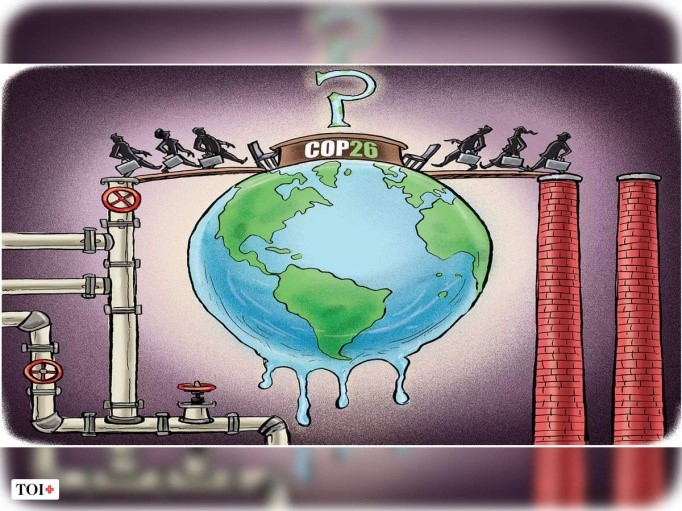
Source:
- Africa, India call for $1.3 tn per year in climate finance from rich nations
- After ‘Like Minded Developing Countries’ meet, prospects for climate change negotiations ‘minimalist’
Image Source:
Goa Maritime Conclave 2021
- Context: The third edition of Goa Maritime Conclave (GMC) is being hosted by the Indian Navy.
- GMC 2021 is focused on ‘winning everyday peace’ in the maritime domain by fostering a shared understanding of the emerging non-traditional threats and in the maritime sector and by developing a 'common perspective'.
- At the conclave, Indian Navy is hosting Chiefs of Navies/ Heads of Maritime Forces from 12 Indian Ocean Region countries comprising Bangladesh, Comoros, Indonesia, Madagascar, Malaysia, Maldives, Mauritius, Myanmar, Seychelles, Singapore, Sri Lanka and Thailand.
- The theme for GMC 2021 is “Maritime Security and Emerging Non-Traditional Threats: A Case for Proactive Role for IOR Navies”.
- It is symbolic of India’s constructive engagement in the Indian Ocean Region (IOR).
- India has been continuously taking efforts in reaching out to the nations in the region bilaterally and under the framework of IONS, IORA, BIMSTEC, Colombo Security Conclave and other structures.
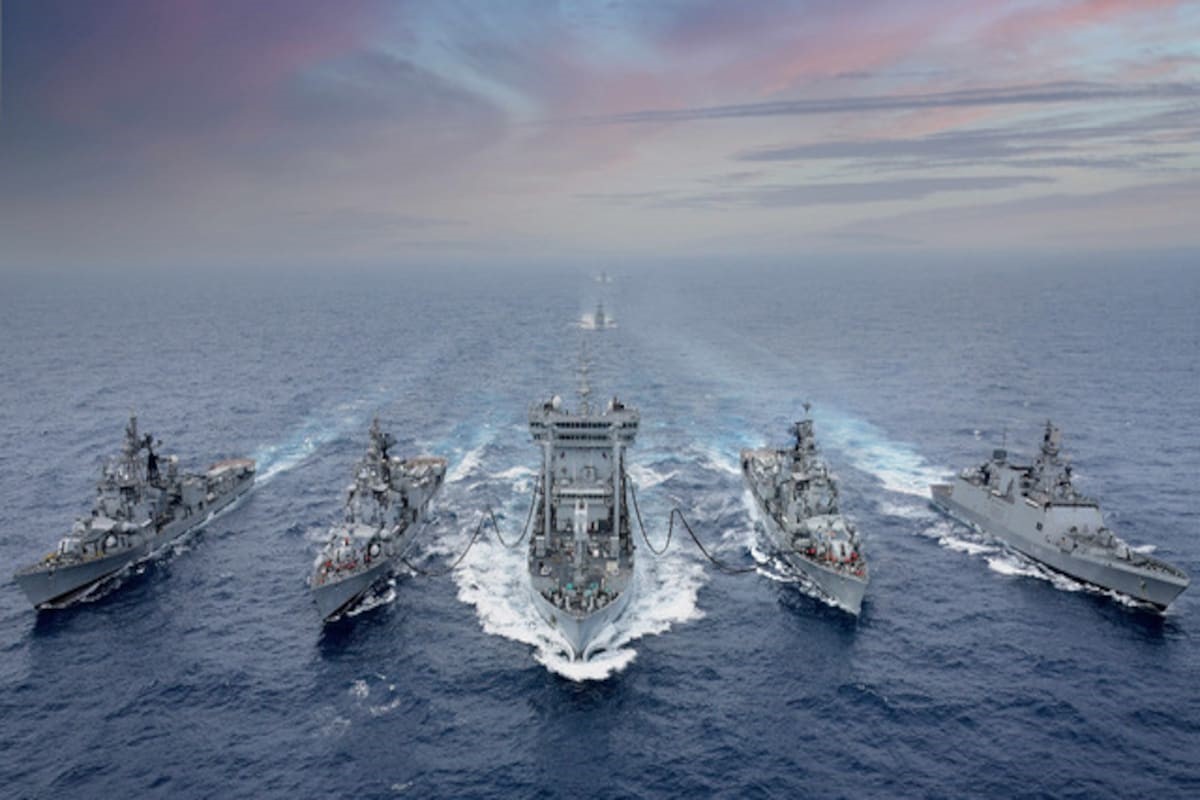
Source:
- GOA MARITIME CONCLAVE – 2021
- Third edition of navy's Goa Maritime Conclave begins tomorrow; to focus on maritime security challenges in Indian Ocean Region
Image Source:
Time to step up cover for natural calamities: BL
Essence: India is vulnerable to frequent natural calamities. This is one of the main reasons behind the severe inequality of distribution of assets in both rural and urban areas. In urban areas this inequality is more visible. Inequality is also present between the coastal and non- coastal states. There is need for an adequate insurance cover for those who are hit hard by natural calamities. Internationally, the World Bank and the Global Facility for Disaster Reduction and Recovery (GFDRR), are developing insurance solutions and providing finance to manage disaster for vulnerable countries. The mature economies are quite ahead in providing insurance solutions and disaster financing.
In India, although insurers offer cover for natural calamities under different policies but insurance penetration is very low. Necessary steps have to be taken up by all stakeholders including IRDAI and insurers in this regard. In turn government too should ensure guarantee funds for insurers in case for their losses due to payment for calamities claims.
Why should you read this article?
- To realize the need of insurance cover for those hit severely by natural calamities in the country like India.
- To know the international efforts towards disaster financing and insurance cover.
- To understand what India needs to do to address the issue of insurance cover for those hit hard by natural calamities.
Source:
For vaccine equity, the TRIPS waiver is crucial: HT
Essence: The article highlights the lack of equity that should prevail in covid-19 vaccine distribution, is being held back due to certain provisions of WTO. When compared to poorer countries G 20 have received 15 times more Covid-19 vaccine doses. The reason being the affordability of these vaccines which could be made available to all by waiving certain provision of TRIPS. However main opponent of the waiver is European Union which argues the countries to use flexibilities under TRIPS than to provide complete waiver.
However, the flexibilities have its own limitations as it just helps in overcoming the patent barrier. The other issues like sharing of trade secrets or the lack of access to technological know-how still needs to be addressed. TRIPS agreement, enacted due to the efforts of developed countries such as the United States and EU’s effort to protect the IP standards of pharma corporations, even at the time of a pandemic, signals the triumph of corporate profits over the health of the poor.
Why you should read this article?
- To understand the factors that is inhibiting the vaccine equity across the globe.
- To understand the difference of opinion between developed and developing nations with respect to waivers under TRIPS (Trade-Related Aspects of Intellectual Property Rights)
Source:
Can exports power India’s growth?: BL
Essence: The article talks about the contribution of exports in reviving the Covid-19 inflicted Indian economy. The article highlights that though India and China both have similar export to GDP ratio yet China is called ‘the world’s factory’ while India is seen as a market. Competing in the international markets has never been easy as economic forces keep making it more complex for India. One of the best examples of this is the subsidies that the government provided to the exporter which WTO asked India to withdraw.
As per WTO subsidies have to be withdrawn by those countries who reaches a particular defined benchmark. So Indian exports should rely more on sharpening their business strategies and adoption of digital technologies. As it is the efficiency provided by IoT, AI and automation are here to stay whereas subsidy are temporary.
Why you should read this article?
- To get a fair idea of the performance of Indian export sector.
- To understand what steps should be taken to bolster the exports of the country.
Source:
Khasi community offers lessons in climate resilience
Background
- The UN’s Food and Agricultural Organisation report also highlighted the efforts of the Khasi community at Nongtraw, near Cherrapunji.
- The traditional practises in the region led to the development of lush green scenery all around.
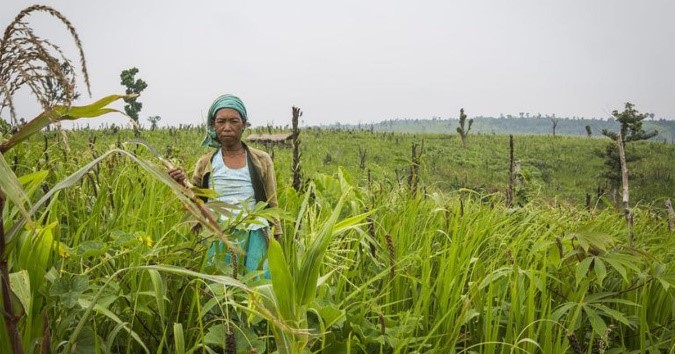
How the Khasi community offers lessons in climate resilience?
- Development of secondary forests through shifting cultivation popularly known as Jhumming. Under the jhum system, the only input used is the ash which comes from burning the biomass which has been felled when clearing the land for cultivation.
- The community uses no external inputs, especially synthetic chemicals, for food production.
- The local governance oversees the food production system, ensuring that the landscape is healthy and strengthening the food system’s resilience.
- The tribal group copes with climate variabilities by using climate-resilient indigenous crop varieties for farming, seed conservation and access to indigenous forest foods and weeds for consumption during adverse situations and lean periods.
- The community recognises that the local climate variability has affected farm productivity and diversity (due to a water-stressed environment).
- Forestry in alternate sequence also plays a major role in uplifting the resilience.
- The traditional dietary practices also plays a dominant role in the scenarios as it maintains balance and harmony with the ecology of the region.
Quote: A sustainable agriculture is one which depletes neither the people nor the land.-Wendell Berry
Source:
Share the article
Get Latest Updates on Offers, Event dates, and free Mentorship sessions.

Get in touch with our Expert Academic Counsellors 👋
FAQs
UPSC Daily Current Affairs focuses on learning current events on a daily basis. An aspirant needs to study regular and updated information about current events, news, and relevant topics that are important for UPSC aspirants. It covers national and international affairs, government policies, socio-economic issues, science and technology advancements, and more.
UPSC Daily Current Affairs provides aspirants with a concise and comprehensive overview of the latest happenings and developments across various fields. It helps aspirants stay updated with current affairs and provides them with valuable insights and analysis, which are essential for answering questions in the UPSC examinations. It enhances their knowledge, analytical skills, and ability to connect current affairs with the UPSC syllabus.
UPSC Daily Current Affairs covers a wide range of topics, including politics, economics, science and technology, environment, social issues, governance, international relations, and more. It offers news summaries, in-depth analyses, editorials, opinion pieces, and relevant study materials. It also provides practice questions and quizzes to help aspirants test their understanding of current affairs.
Edukemy's UPSC Daily Current Affairs can be accessed through:
- UPSC Daily Current Affairs can be accessed through Current Affairs tab at the top of the Main Page of Edukemy.
- Edukemy Mobile app: The Daily Current Affairs can also be access through Edukemy Mobile App.
- Social media: Follow Edukemy’s official social media accounts or pages that provide UPSC Daily Current Affairs updates, including Facebook, Twitter, or Telegram channels.

